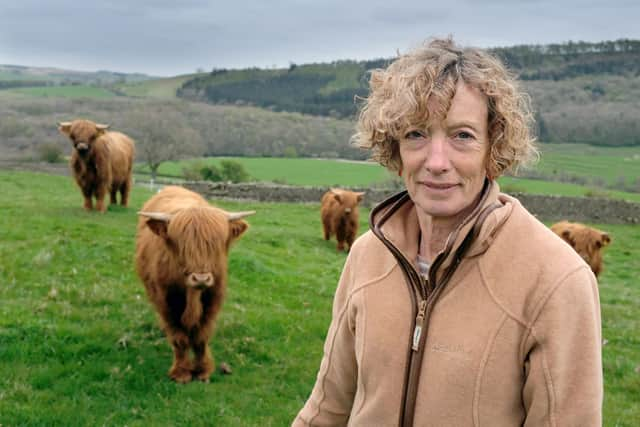Pedigree Highland cattle breeder creates new 12-acre woodland on land in Yorkshire
Julia Carr, from Marrick Park farm in the north east of the Yorkshire Dales National Park, is working with the Tees-Swale: Naturally Connected programme, the Farming in Protected Landscapes programme, as well as a new woodland creation scheme called Grow Back Greener.
Through Tees-Swale hay meadows are being restored and several kilometres of hedgerows have been created, often by volunteers including refugees travelling into the National Park from Leeds.
Advertisement
Hide AdAdvertisement
Hide AdA 12-acre woodland was created last month near Marrick village, with more than 5,600 trees and shrubs planted, and a permissive footpath created through the woodland, funded by the Farming in Protected Landscapes programme.


But Ms Carr admits she has faced criticism from some people for creating the woodland. And in an in-depth Q&A published on the National Park Authority’s blog, she talks frankly about her experiences.
Ms Carr said: “I’ve done annual hedgerow, infill, individual trees and copse planting in the past, but that has always been limited not so much by the finances but the manpower because we only have between November and April to get stuff in the ground, and with everything else we’re doing there are limits.
“Tees-Swale was the first grant that has allowed me to get enough people together to plant as much as I’d like in a season.”
Advertisement
Hide AdAdvertisement
Hide AdMs Carr moved to the area in 2004 with her husband and three young sons, but when her husband left after five years she had to make changes.
“I saw the opportunity to get more actively involved in the farming and actually do a lot of the planning and managing of it myself.
“In 2009 my immediate aim was to improve the boundaries and gates, and then the pastures and meadows, for the benefit of the soil, sward, wildlife and wildflowers. In 2010 I set myself the objectives of improving the biodiversity of the land and enhance and extend existing woods, copses, infield trees and hedgerows.
“The focus has always been on joining up the woods at the bottom of the land around the river area, and then going up to the top land.
Advertisement
Hide AdAdvertisement
Hide Ad“My intention was to reduce the intensity of sheep grazing, and introduce cattle. I removed sheep completely from some of the land and step by step introduced Highland cattle, that stays out all year round.
"I chose Highland cattle – they browse well on rough pasture, are good converters that perform on a 100 per cent grass diet, and improve the biodiversity of the pastures. They are slow maturers and easy for me as a single mum to handle and manage round the year.”
Member Champion for the Natural Environment at the Yorkshire Dales National Park Authority, Ian McPherson, said: “When generous-spirited Dales farmers work in partnership with our conservation staff, everyone benefits.
"What’s happening at Marrick Park is an example of three of our major projects – Tees-Swale, Grow Back Greener and Farming in Protected Landscapes – complementing each other to enable a Dales farmer to scale up their ambitions for biodiversity.
“Increasingly it pays to be a nature friendly farmer in the Yorkshire Dales National Park.”
